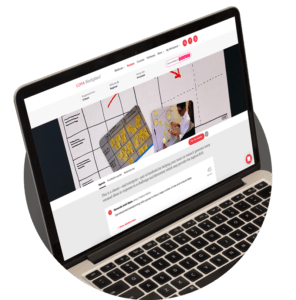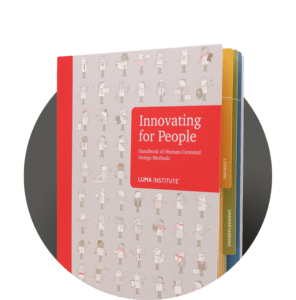Method overview
Model making is the fundamental craft of design—it is the process of thinking with your hands. Low-fidelity sketch models make it easy to generate a number of tangible concept ideas without significant monetary or time investment, allowing you to bring form to even nascent ideas.
Using readily available, low-cost materials such as paper, markers, cardboard, foam core, glue, and so forth, you can quickly create concept models for people to evaluate. The sooner you create something tangible for people to touch and manipulate, the earlier you’ll get meaningful feedback about your ideas. You can use rough models to help identify ideas that are working, as well as pinpoint weaknesses early in the process so they can be addressed before the concept is finalized. As architect Frank Lloyd Wright said, “You can use an eraser on the drafting table or a sledgehammer on the construction site.”
The benefits of this method
- Promotes a shared vision of the future.
- Helps you test ideas quickly.
- Lowers development costs through early discovery.
- Helps you make iterative improvements.

Quick guide
- Identify an idea or concept to develop.
- Assemble a small design team.
- Gather basic materials (e.g., pen, paper, tape, etc).
- Consider what you want to learn from the prototype.
- Select a scenario and a few key tasks to focus on.
- Build a rough approximation of the concept.
- Simulate as much functionality as possible.
- Include some realistic and readable content.
- Provide a signal for the areas that are incomplete.
Helpful hints
- Apply good craftsmanship, but don’t belabor it.
- Be resourceful. Make clever use of found objects.
- Use role-play to simulate personal interactions.
Combining LUMA methods into design recipes
The methods in the LUMA System are great on their own, but they are really powerful when combined into design recipes. Just like when you combine ingredients to make a tasty meal, you can also combine design methods to address challenges such as improving workplace culture or uncovering customer insights.
An example of a recipe from LUMA Workplace®:


Want to learn more about LUMA methods?


